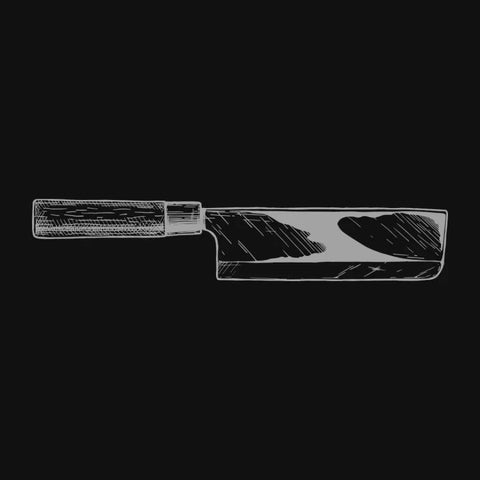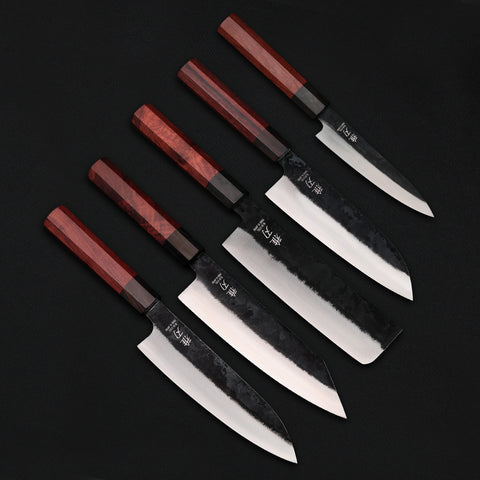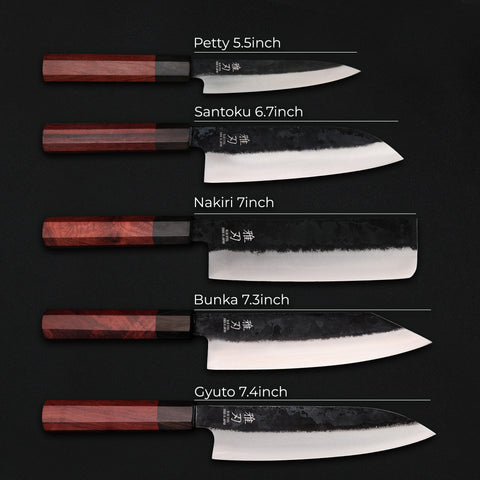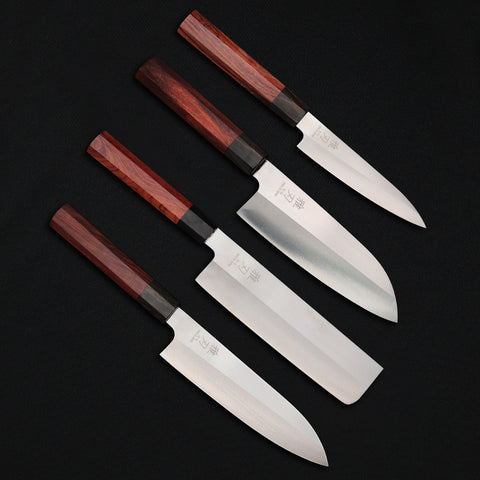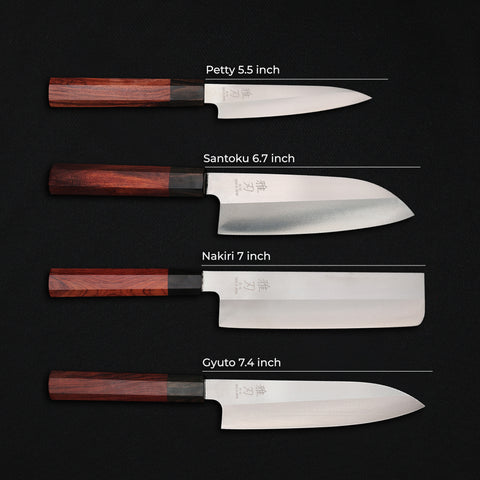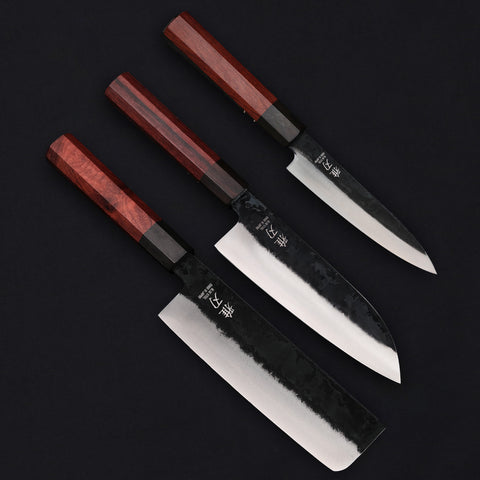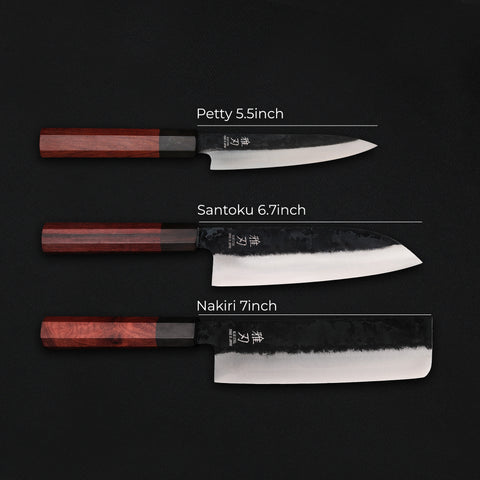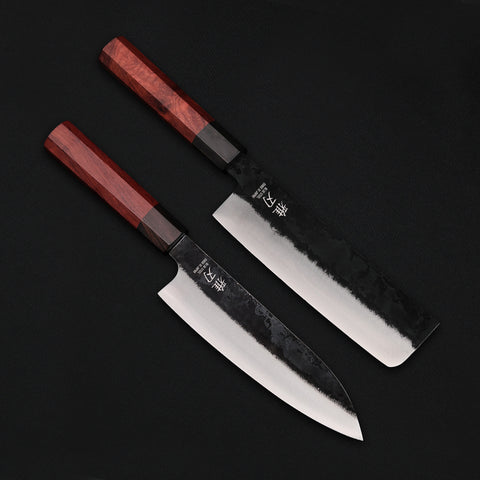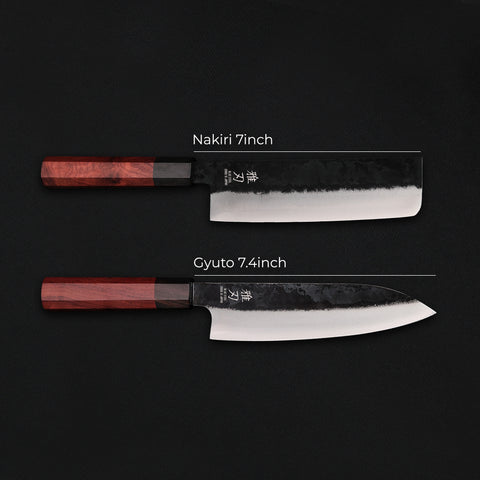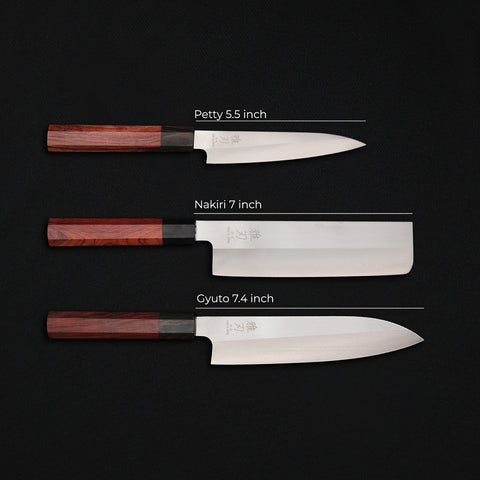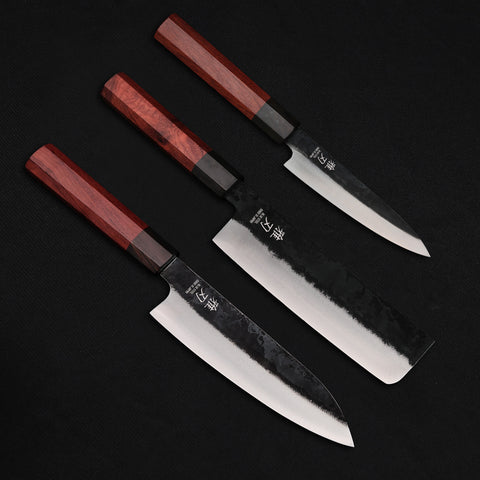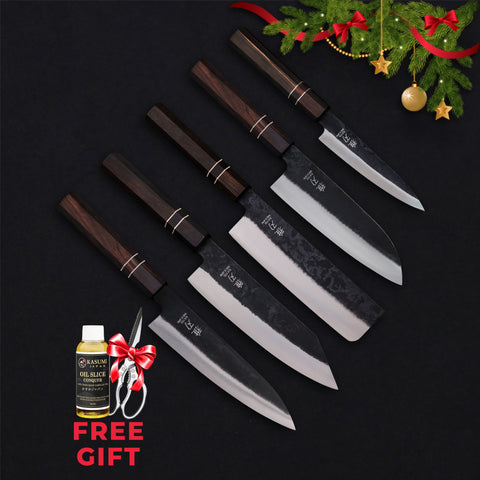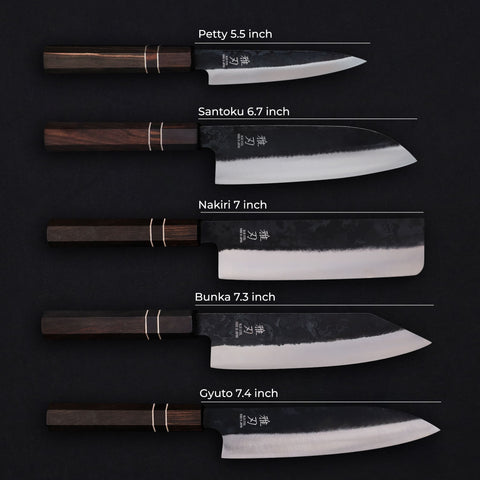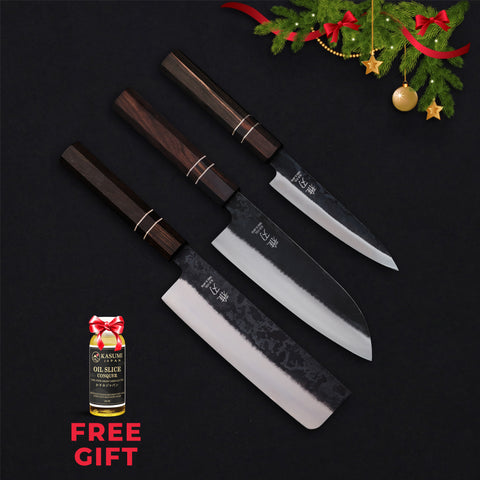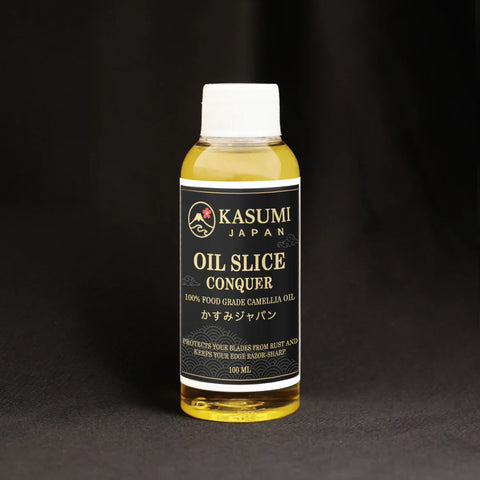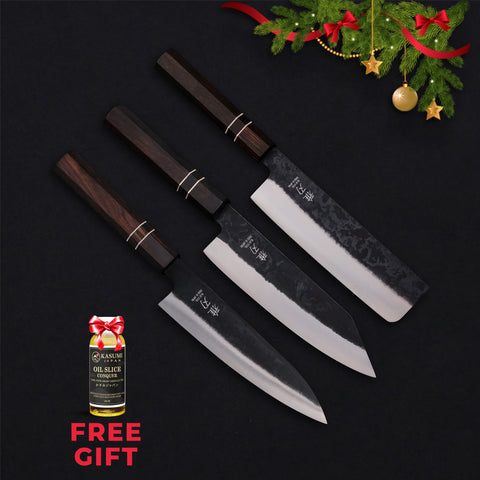The Nakiri (菜切り) is a double-bevel Japanese vegetable knife known for its thin, rectangular blade and clean, effortless cuts. Popular among home cooks and vegetarians, it excels at chopping, slicing, and mincing vegetables with speed and precision. While its shape may resemble a small cleaver, the Nakiri is not designed for bones or hard ingredients due to its lightweight and delicate edge.
With blade lengths typically around 165mm to 180mm, it offers generous knuckle clearance and smooth guidance for push, pull, or tap chopping techniques. Its flat edge and tall blade make it ideal for straight cuts and consistent prep. Unlike curved knives, the Nakiri maintains its cutting length well over time, even with frequent sharpening.
Guide for choosing Nakiri Knives
Steel type. High-carbon steels take a razor edge and hold it well but need careful drying and storage; stainless options are easier to maintain day to day.
- Blue Steel Nakiri Knives – Carbon alloy (Aogami) with excellent bite and edge retention; wipe dry immediately and expect a natural patina.
- VG-10 Nakiri Knives – Popular Japanese stainless that balances sharpness, retention, and corrosion resistance for everyday use.
- Carbon Steel Nakiri Knives – Keen cutting feel and easy resharpening; reactive to moisture and acids, so keep the blade clean and dry.
- Stainless Steel Nakiri Knives – Strong corrosion resistance and low maintenance; a practical choice for busy home kitchens.
Finish. Surface texture can change how easily slices release and also defines the knife’s character. Textured finishes help reduce sticking; polished finishes emphasize low drag and easy cleanup.
- Tsuchime Finish Nakiri Knives – Hammered dimples create small air pockets for better food release when slicing.
- Nashiji Finish Nakiri Knives – Lightly textured “pear skin” look; rustic aesthetic with modest anti-stick benefit near the spine.
- Kurouchi Finish Nakiri Knives – Dark forged scale left on the upper blade; traditional feel and some protection on the cladding.
- Polished Finish Nakiri Knives – Smooth, low-friction surface (sometimes with decorative damascus); precise cuts and easy wiping.
Size. Match blade length to your board space and prep volume. Shorter feels nimble; longer gives more contact on the board and steadier, straighter cuts.
- 6.5" Nakiri Knives – About 165 mm; compact and agile for small boards and quick daily prep.
- 7" Nakiri Knives – About 180 mm; extra reach and inertia for larger batches of vegetables.
Price. Cost reflects steel grade, heat treatment consistency, hand work, and finish quality. Set expectations by tier to get the best fit for your needs.
- Under $100 Nakiri – Entry-level utility with basic finishes and straightforward upkeep.
- Under $200 Nakiri – Strong balance of performance and fit-and-finish; more consistent heat treatment and better handles.
- Under $500 Nakiri – Premium materials and craftsmanship; refined cutting feel and standout detailing.
Nakiri knife FAQs
A nakiri is a Japanese double-bevel vegetable knife with a thin, straight, rectangular blade, designed for push-cut chopping, slicing, and mincing vegetables cleanly.
Neither is “better” overall—they’re for different jobs. Santoku is an all-purpose knife (the “three virtues”: meat, fish, veg) with a profile that allows some rocking; nakiri is specialized for vegetables with a flat edge for straight up-and-down cuts. Choose santoku for versatility, nakiri for veggie-focused prep.
Not essential. Most home cooks can cover nearly all tasks with three core knives: a chef’s knife, a paring knife, and a serrated bread knife. Add a nakiri if you prep lots of vegetables and like fast push-cutting.
They can slice boneless meat, but avoid bones, joints, and frozen foods—hard materials can chip the thin edge.
No. Its flat edge and blunt tip make it poor for tasks needing a point or rocking motion (e.g., boning, piercing), and it isn’t a substitute for a serrated bread knife or for cutting through hard materials. Use it primarily for vegetables.

